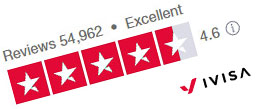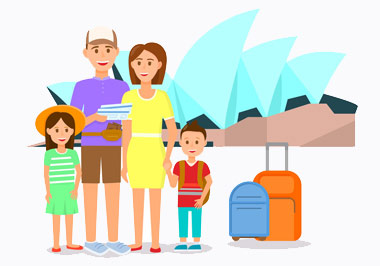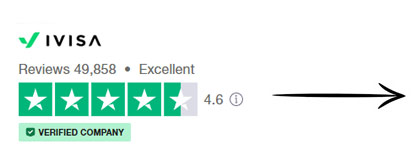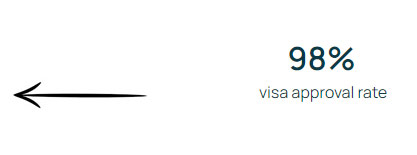Australia eTA application for child
Family visas in Australia: eVisitor, classic visas and requirements for children travelling safely.
 Fast: Simplified, efficient process.
Fast: Simplified, efficient process.
 Security: information is protected.
Security: information is protected.
 Reliability: 98% approval rate.
Reliability: 98% approval rate.
 Assistance: 24/7 customer support.
Assistance: 24/7 customer support.


Travelling as a family is a valuable experience, and if you're planning to visit Australia with your children, it's essential to understand the Australia Group with Children visa application process. This page is dedicated to guiding you through the important steps and considerations when including minor children in your visa application. Navigating the administrative formalities for a family trip may seem complex, but with the right information, you can plan your trip with confidence, while complying with the regulations in force. Let's find out together how to make this trip memorable and hassle-free for the whole family.
Australia visa for children / minors: in brief
- Online application for a child's eVisitor: The application for a visa for a minor child for Australia is made online.
- Specific application form: A specific application form must be completed for each minor child.
- Documents required: In addition to the standard documents, specific documents relating to the minor child, such as an identity card or birth certificate, will be required.
- Parental consent: The consent of both parents (or legal guardians) is required for the visa application.
- Processing time: The processing time for a visa application for a minor child can vary, so it is important to apply early.


Travelling to Australia as a family with children requires careful preparation, particularly when it comes to the administrative procedures involved in obtaining a visa. For citizens of the European Union and other eligible countries, there are two options: theeVisitor and theeTA (Electronic Travel Authority). These two electronic visas allow you to travel to Australia for tourism, but it's important to understand their specific features, the procedures to follow, the cost and the period of validity, especially when travelling with children.
The eTA (Electronic Travel Authority) is mainly intended for nationals of countries such as the United States, Canada, Japan, South Korea, etc. It is a simple, electronic visa. It is an electronic visa, easy to obtain and generally required for stays of less than 3 months. It is valid for tourist trips, but also for business or family visits.
The eVisitor, on the other hand, is a specific version of the electronic visa for nationals of the European Union and certain other European countries. This visa also allows you to stay in Australia for up to 3 months, for tourism or to visit family.
Although both visas offer similar benefits, it is essential to check which type of visa applies to you, depending on your nationality. If you are a citizen of an EU country, the eVisitor will be the simplest and most economical solution.
The procedure for applying for an eTA or eVisitor is entirely paperless and is done online, via the official Australian government website or via a service provider. This greatly simplifies the process, especially when travelling as a family. Here are the main steps:
The main advantage of electronic visas such as the eVisitor and eTA is the speed of the process. In general, these visas are processed very quickly. Once you have submitted your application, you will receive a reply within 24 to 72 hours. It is therefore possible to apply online a few days before your departure, but it is recommended that you do so at least a week in advance to avoid any unnecessary stress.
If you need it urgently, some tour operators or specialist agencies offer fast-track services, although this is not necessary in most cases.
An eVisitor or eTA is generally valid for 3 months from the date of arrival in Australia. This may seem short, but it's enough for a typical tourist stay. If you wish to extend your stay, you will need to make a new visa application or request a specific visa from the Australian authorities in Australia.
The eTA or eVisitor allows you to enter Australia several times during the period of validity, but each entry must respect the 3-month limit. This means that if you leave Australia for another destination during your stay, you can re-use the same visa to return without having to apply for a new one, as long as you stay within the 3-month limit.
Practical advice for travelling with children
When planning a family trip to Australia, the classic tourist visa is one of the options to consider.
The Classic Tourist visa, also known as the Visitor visa (subclass 600), is a suitable option for families wishing to visit Australia for tourism, family or leisure purposes. The application process involves the following steps:
Minors travelling to Australia require specific documents. This includes a valid passport for each child. If one parent is travelling with the child without the other parent, a signed parental consent form may be required. This authorisation demonstrates the consent of the non-accompanying parent to the trip.
Processing times for Australia's traditional child tourist visas may vary depending on the time of year, the number of applications being processed, and other factors. In general, it is advisable to submit the application at least one to three months before the intended date of travel to allow for these potential delays. It is also advisable to consult the Australian Department of Home Affairs website for up-to-date information on processing times.
If you want to make sure you get your visa for Australia in time for your family trip or have your children, here are a few recommendations and tips to follow:
Your children's safety is paramount when travelling internationally. Here are a few important reminders:
Travelling alone to Australia with an eTA or eVisitor is possible, but there are several points to bear in mind. Firstly, neither the eTA nor the eVisitor specify a minimum age for applying, so in theory a child can get one of these visas. However, this does not mean that a minor can travel alone to Australia without extra precautions.
Even if the eTA or eVisitor allows a child to travel to Australia, the Australian authorities require the child to be under the responsibility of an adult when travelling. If a child is travelling alone, they will need parental authorisation and possibly a notarised parental consent document. This document certifies that the child has permission to travel abroad, and that he or she is being looked after by a responsible adult on the spot.
Most airlines have strict policies on minors travelling alone. Children under the age of 12 are often required to travel as part of a special escort service (an ‘unaccompanied minor’), which includes care on departure, in flight and on arrival. It is therefore essential to check the specific arrangements with the airline before booking a flight for a child travelling alone.
In short, although a child can theoretically travel alone with an eTA or eVisitor, it is important to prepare the journey carefully, ensuring that all the legal and logistical requirements are met.
Find out if your question has been answered in the list below
As a family travelling to Australia with children, you have several visa options. The most common are the Classic Tourist Visa (subclass 600), the eVisitor and the eTA (Electronic Travel Authority). Each of these visas has its own eligibility requirements and benefits, so it's essential to choose the one that best suits your needs.
Minor children included in a visa application must have a valid passport. In addition, you may need to provide proof of the parent-child relationship, such as birth certificates. If one parent is travelling without the other, a signed parental authorisation may also be required. Be sure to check the specific requirements of the visa you are applying for.
Visa processing times vary depending on the type of visa, the time of year and the volume of applications. In general, it is recommended that you submit your application at least one to three months before your intended date of travel to allow for potential delays. eVisitor and eTA tend to have shorter processing times than traditional tourist visas.